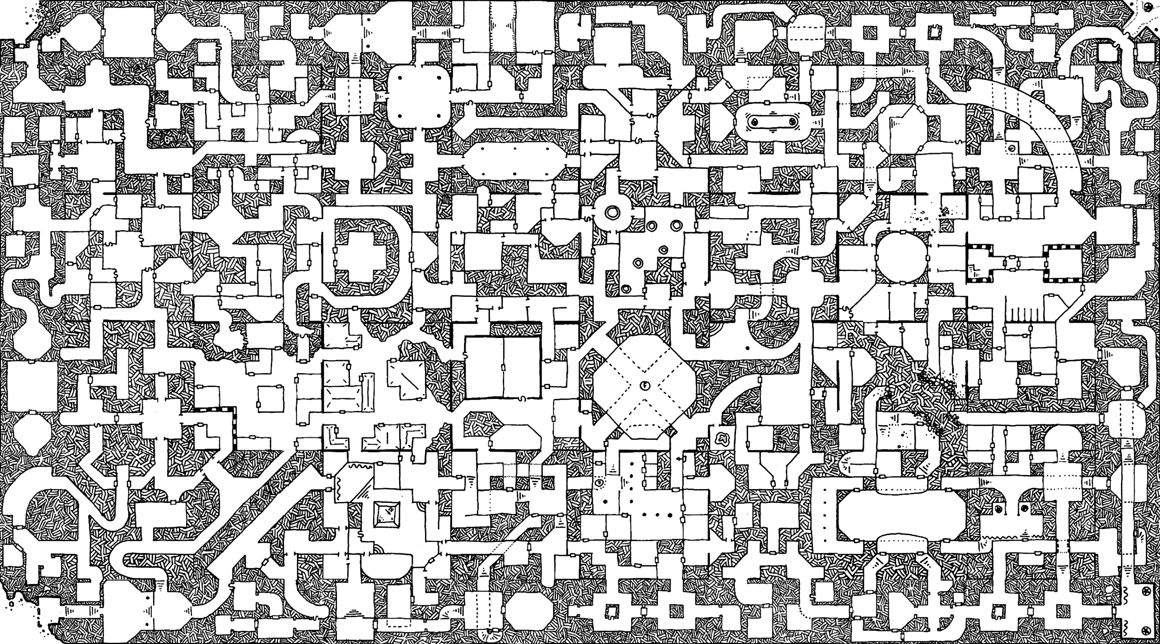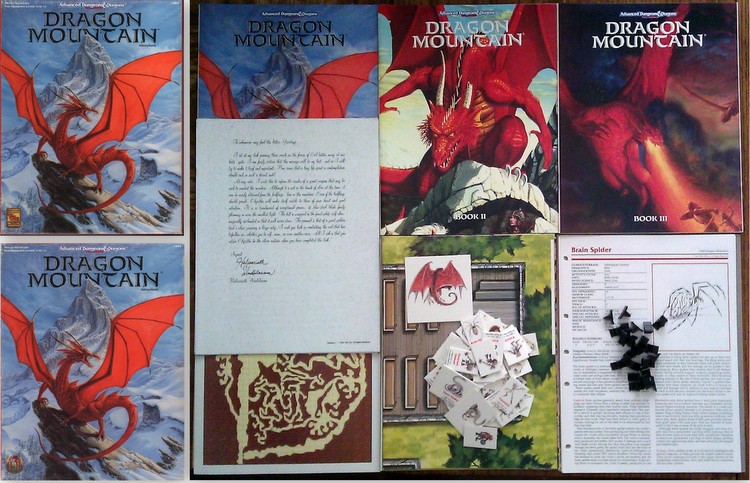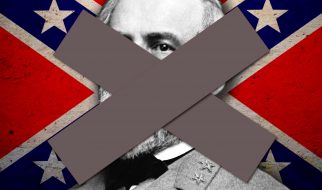Ground Rules and Expectations
 Cartography by Dyson Logos
Cartography by Dyson Logos
Astute readers will notice I missed a Mouse Guard update last week, and I?m missing another one this week. Don?t worry, they?ll be back next week! I live in Houston, and our schedule was impacted by hurricane Harvey. Thankfully, my home and neighborhood made it through the storm unscathed, but much of Houston did not. Clean-up and recovery is still ongoing, and thousands of people have been displaced. If you want to help, I encourage you to take a look here for charities who could use it.
Part 2 ?
When I was 13, I walked into a bookstore in the mall with $30, and walked out with the first Dungeons & Dragons adventure I had ever bought: Dragon Mountain. The box probably weighed five pounds, and promised a deadly, exciting adventure for parties levels 10?15. Upon opening it, I was awed by the multiple, poster-sized maps, intricate hand-outs, and guide books. Here was months ? maybe years ? worth of adventure for me and my friends. As soon as school started back up, we dove in.
 Not pictured ? 3 poster-sized maps. Also my childish delight.
Not pictured ? 3 poster-sized maps. Also my childish delight.
Unfortunately, I was an inexperienced dungeon master, and unequal to the task of dungeon-mastering such a behemoth. I?d never run a high-level, deadly game before, and my players hadn?t played anything like Dragon Mountain. Also, if I?m being honest, some of the material wasn?t great; the first book is a boring slog, which doesn?t even feature the titular dungeon; and it?s hard to keep the attention of five 13-year-olds for very long.
However, one thing Dragon Mountain did accomplish was instilling in me the love a good, long, well-planned dungeon crawl.
Fast-forward 23 years, and I was feeling the itch to engage in some old-school-inspired dungeoneering. My schedule had cleared up a bit, and I thought an online game might be a good way to reconnect with some friends of mine who were still back in my hometown. I asked what type of game they?d be interested in, and they unanimously responded with ?mega dungeon.? As you can imagine, I could hardly contain my delight! We settled on D&D 5th Edition as our game, and it was time to start planning the delve.
Mega dungeons are one of those weird genre conceits which can only exist in games; there?s simply no way they would work in real life; and that?s what makes them fun. As I sat pondering what to run for my group, I quickly decided I wanted to build my own. Now, it?s been a long time since I made anything with as much prep as a true dungeon, and I?ve never written an adventure for 5E. In other words, this sounded like a fun challenge! Also, I?ve matured a lot as both a DM and player over the last several years, and I?m looking forward to putting those lessons to use.
So step one ? what type of adventure am I going to run? Every dungeon needs a general plot and theme; something which ties the various aspects of the place together (unless you?re running a ?funhouse? dungeon, which is a post for another time). I know I want something that?s not a generic ?evil orcs in a hole? kind of scenario. I like dark, twisty things with tentacles and madness, and love video games like Dark Souls, Bloodborne, and Darkest Dungeon. In short, I want something creepy and unsettling, with stories the players (and I) can discover as they delve. Also, I want this game to evoke an old-school vibe, even though we?re playing 5E. That means it needs to be deadly, and encourage the players to find solutions which don?t always involve sticking things with the pointy end.
I haven?t landed on a solid hook yet, but I?ve got a few brewing, which means it?s time to talk about prep.
As I?ve discussed multiple times, I am not a huge fan of prepping for games, and I?ve fully embraced the narrative style of running things; that is to prepare as little as possible, and let everyone at the table discover stories together. This is a problem when running a mega dungeon, or any dungeon, really. After all, you?ve got to know where the players are, and where they are headed. You have to understand the theme, and know what?s at the end (or middle, or bottom) of the dungeon. Also, dungeon crawls are predicated on loot, which means you need to have some tasty rewards at the ready. When it comes to a mega dungeon ? which is really a long series of linked, regular dungeons ? these problems are doubly important. When players enter the dungeon at level 1, you need to have clues and hooks to lead them into the depths, so you can bring all of that around again at level 10.
It would seem, then, that the mega dungeon is going to be the thing which breaks my ?as little prep as possible? ethos. After all, most mega dungeons are planned in the extreme; every room or area is populated with creatures, treasure, and descriptions. Even something like Stonehell ? a truly excellent mega dungeon ? is fully prepped, and it only uses simple, one-line descriptions for things. Traditionally, the most ?low prep? way to go about building a dungeon has been to randomly roll for everything, and that means you?ve got to build various tables for things. All of these are excellent, tried-and-true methods for creating a vast, sprawling dungeon. But frankly, I?m an adult, with responsibilities and other hobbies. In short, I want to find a way to create a meaningful, fun, challenging adventure with as little homework as possible.
Challenge accepted.
With the constraints in mind, let?s talk about how we can go about applying both classic adventure creation strategies, and the tools given to us by games like Dungeon World or Apocalypse World.
- Borrow liberally from other people. Roleplaying games have a rich, long history by now, and plenty of other people have come before us and built interesting adventures. So, we can take those and incorporate them into our own mega dungeon. Prebuilt modules, such as The Sunless Citadel, make excellent entries into a dungeon complex, and this one was recently retooled for 5E!
- Use Fronts and Threats instead of explicit plotting. Vincent Baker has given us many things, but Fronts and Threats might be one of his most important, lasting legacies (at least when it comes to dungeon mastering). In the past, I would write detailed plots for my games, which would inevitably derail as soon as the players encountered them. If we?re going to avoid prepping this dungeon, we can?t afford a complex, Wiley E. Coyote style plot for our villain (or villains). Instead, we?ll utilize Fronts, Threats and Clocks to manage most of the bigger plots, and adjust as the characters impact them during the delve.
- Let the internet draw our maps. Maps are probably where people spend the most time prepping for games like this ? or at least, where I sink most of that time. This is especially the case when running online games, since we often want to allow the players to see the map. Luckily, we have the internet, and there are whole communities dedicated to making maps for role playing games. This is another place where we can borrow something from an existing adventure, and fill it with our own stuff. We can also just let a random generator build maps for us. What could be easier?
- Or, use a flow chart. This is a trick I picked up by watching Steven Lumpkin prep his West Marches games, and I?m honestly embarrassed I didn?t realize it sooner. Flow charts make excellent maps, since that?s basically what they are. This works especially well if we run a ?theater of the mind? game, where the players don?t ever see any version of our map.
- We?re going to need tables. This is one area of prep I don?t think we can get away from entirely. Part of what makes a dungeon dangerous is the idea that at any moment, something could happen upon our unsuspecting party. Random tables also keep things interesting and fresh, as there are few things more exciting than discovering some piece of special loot where you didn?t expect it. On a more mundane level, random tables can also help us populate empty rooms. Again, the internet has our backs; as there are plenty of tables and generators lying around for this stuff. We can?t rely entirely on these, though, as we want our ?random? encounters and discoveries to work with the theme and plot of our mega dungeon. But, we can certainly use other people?s work as an example!
- Pick some goodies for the party. Random loot is fine, but we should make sure and choose or create some rewards we know we want to give the party. These items could be the cornerstone of entire sections of a dungeon, and if we know what they are, we can build the excitement and tension as the characters begin to discover them.
- Other house keeping. As we build our dungeon, we need to make sure we do a little homework; grab stat blocks for creatures, decide which monsters we?ll use for which NPCs, get some traps handy to spring on the group, etc. This kind of prep is fine, since the ?hard? part has been done already. We just need to pick the bits which work best for us.
Well, I think we?ve got a great start to our ?low prep? mega dungeon! Next time, we?ll start working on the specifics ? what the general ?hook? for the delve is, and what nasty things lay below the surface. Until then, I would love to get your feedback! Do you think this is going to work? Have I made some huge mistake, or forgotten something important? Let me know! I want this to be a memorable series of adventures of my players, and you can help me do that!


